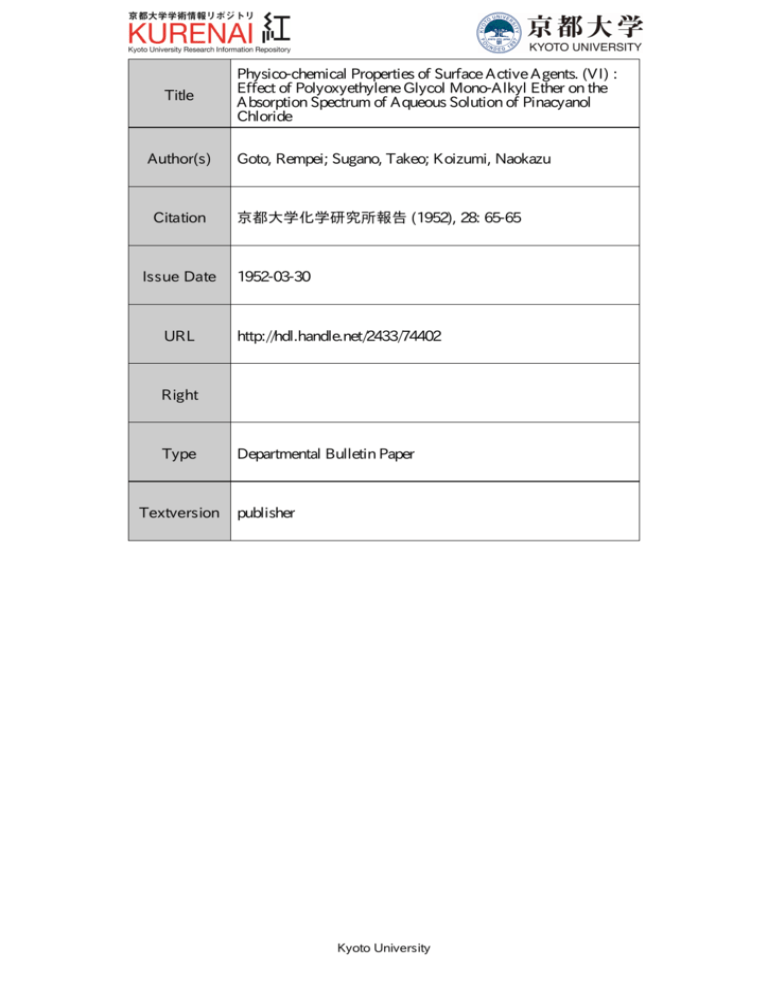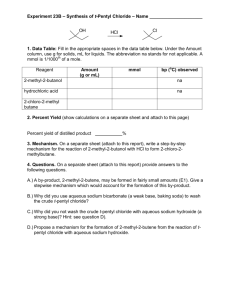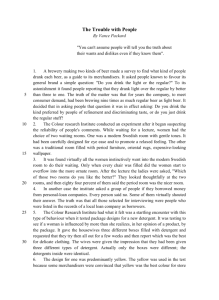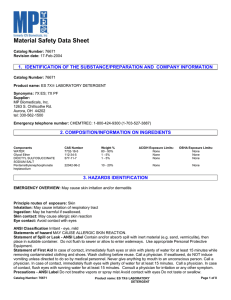Title Physico-chemical Properties of Surface Active Agents. (VI
advertisement

Title Author(s) Citation Issue Date URL Physico-chemical Properties of Surface Active Agents. (VI) : Effect of Polyoxyethylene Glycol Mono-Alkyl Ether on the Absorption Spectrum of Aqueous Solution of Pinacyanol Chloride Goto, Rempei; Sugano, Takeo; Koizumi, Naokazu 京都大学化学研究所報告 (1952), 28: 65-65 1952-03-30 http://hdl.handle.net/2433/74402 Right Type Textversion Departmental Bulletin Paper publisher Kyoto University 14. Physico-chemical Properties of Surface Active Agents. (VI) Effect of Polyoxyethylene Glycol Mono-Alkyl Ether on the Absorption Spectrum of Aqueous Solution of Pinacyanol Chloride RemPei Goto, Takeo &gam and Naokazu Koizumi (Goto Laboratory) It is well known that the absorption specturn of aqueous solution of pinacyanol chloride is affected by the presence of rnicelle of anionic detergents. Hence the color change of this dye solution is utilized in the determination of the critical concentrations of the detergents. In the case of the non-ionic detergent, polyoxyethylene glycol mono-alkyl ether, it was found that aqueous pinacyanol chloride solution changed its color with an increase in the concentration of this detergent. Thus, the spectral change of the aqueous pinacyanol chloride solution was observed to determine the concentration for micelle formation. The measurement was carried out at the concentration of pinacyanol chloride 14 x 10-5 mol/litre at room temperature, about 15°C. The absorption spectrum of this dye in water has two bands (a and 8) at about 610mte and 550mp in wave length. Addition of the detergent caused the gradual increase in the intensity of a band, until the concentration of the detergent reached to a definite value reported as c.m.c. previously. And the location of the bard maximum was shifted about lOmp towards longer wave length than in water. However, the intensity of a band remained constant above this concentration. The (3 band was much less affected by the detergent, though the slight increase of the intensity and broadening of the bar d were observed. The increase of the a band may be ascribed to the formation of the micelle of the detergent. Thus it is suggested that the micelle formation occurs even at lower concentration of the detergent than the one reported as c.m.c. previously. C65)







